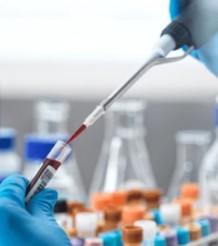Glutaric Acidemia Type I (GA1)
- Home
- Metabolic Diseases
- Glutaric Acidemia Type I (GA1)
Glutaric acidemia type I (GA1) is a metabolic disorder often undiagnosed until the individual presents with symptoms, leading to a potentially late diagnosis. With extensive experience in GA1 diagnostic research, Protheragen is ready to offer customized solutions and thorough assistance to help you navigate the transition from GA1 diagnostic research to its commercialization.
Glutaric acidemia type I or GA1 is an uncommon genetic metabolic disorder characterized by the absence of glutaryl-CoA dehydrogenase (GCDH) enzyme. This enzyme is necessary for the breakdown of amino acids such as lysine, hydroxylysine and tryptophan. When this enzyme is deficient in the body, there is an accumulation of glutaric acid and 3-hydroxyglutaric acid which leads to the destruction of the nervous system and the brain.
 Fig. 1 Disorders of lysine and tryptophan metabolism in GA1. (Panis, Bianca, et al., 2024)
Fig. 1 Disorders of lysine and tryptophan metabolism in GA1. (Panis, Bianca, et al., 2024)
The use of biomarkers in the diagnosis of glutaric acidemia type I (GA1) is highly beneficial as it facilitates the management of this rare metabolic disorder through proper identification and intervention. These biomarkers can assist with early detection that can lead to timely changes in diet and other emergency measures to prevent potentially irreversible neurological damage.
![]() Metabolic Biomarkers
Metabolic Biomarkers
Metabolic biomarkers are glutarylcarnitine (C5DC), glutaric acid, and 3-hydroxyglutaric acid which accumulate in GCDH enzyme deficiency. The presence of elevated metabolites in blood, urine, or plasma gives conclusive information about the metabolic block characteristic of GA1.
![]() Genetic Biomarkers
Genetic Biomarkers
The genetic markers for GA1 consist of detection of mutations in the GCDH gene which encodes the enzyme glutaryl-CoA dehydrogenase. More than 200 pathogenic variants in the GCDH gene are known, and their diagnosis through next generation sequencing (NGS) is confirmatory for GA1.
The non-invasive, handy, and easy to use in vitro diagnostic (IVD) kits allow effective diagnosis of glutaric acidemia type I (GA1). These kits capture diagnostic information with great accuracy through the measurement of metabolic and genetic biomarkers, making it possible to clinically differentiate GA1 from other metabolic disorders.
| Kit | Sample Type | Application | Detection Method |
| C5DC Quantification Kit | Plasma, serum | Quantitative analysis of acylcarnitines | LC-MS/MS |
| Urinary Organic Acid Test Kit | Urine | Detection of organic acids such as glutaric acid and 3-hydroxyglutaric acid | GC-MS |
| GA1 Genetic Testing Kit | Blood, saliva | Identification of GCDH gene mutations | NGS |
| GCDH Enzyme Activity Assay Kit | Fibroblasts, leukocytes | Detection of GCDH enzyme activity | Spectrophotometric Assay |
Protheragen appreciates the role of IVDs in the diagnosis and management of GA1. Our scientists aim at the creation of IVD solutions, developing and deploying test kits for genetic and metabolic biomarker diagnostics, as well as supporting advanced diagnostic device development for the rare metabolic disease GA1.

At Protheragen, we assist in the prompt diagnosis and tailored therapeutics of rare metabolic diseases like GA1 through the provision of point-of-care testing (POCT) and companion diagnostic development services. These services aim to solve the problem of timely and precise diagnostics that are needed to enhance therapeutic outcome and quality of life. For further inquiries and pricing details, don't hesitate to reach out to us.
Reference
All of our services and products are intended for preclinical research use only and cannot be used to diagnose, treat or manage patients.